|
|
ADDRESS AT THE INAUGURATION OF THE INDIAN INSTITUTE OF ADVANCED RESEARCH AND THE SYMPOSIUM ON 'NEW FRONTIERS IN MODERN BIOLOGY', KOBA, AHMEDABAD
28-04-2006 : Gujarat
Convergence of Technologies
"Science is a life time mission"
I am delighted to participate in the inauguration of Indian Institute of Advanced Research (IIAR) and also the Symposium on "New Frontiers in Modern Biology". I greet the organizers, biologists, bio-technologists, educationists, researchers and distinguished invitees participating in this function. Like Vasantdada Sugar Institute of Pune serving the needs of co-operative sugar institutions in Maharashtra through cellular and molecular biology, IIAR must ask themselves what can be their contribution to Gujarat which comprises of desert, coastal area, hilly terrain and plains. For example, the Palm trees in the Middle East produce fresh dates of large size, high quality and higher yield per plant. Bio-technologists assembled here may like to see whether the yield and quality can be replicated in Gujarat desert region. I visualize the Indian Institute of Advanced Research providing the critical, biological and bio-technological inputs to various sectors of economy of Gujarat in particular and the nation. I was going through the different subjects being discussed in the Symposium on "New Frontiers in Modern Biology". New trends in Malaria research, heart muscles diseases, bio-technological approaches for improving agricultural security, Neuro-biology of Parkinson?s diseases and chemo-biological technology for remediation of contaminated sites are definitely important subjects for finding the solutions to the problems faced by the mankind. When I am in the midst of biologists and bio-technologists, I would like to discuss some of the important areas of research which aligns with the national priority. My topic for discussion is "Convergence of Technologies".
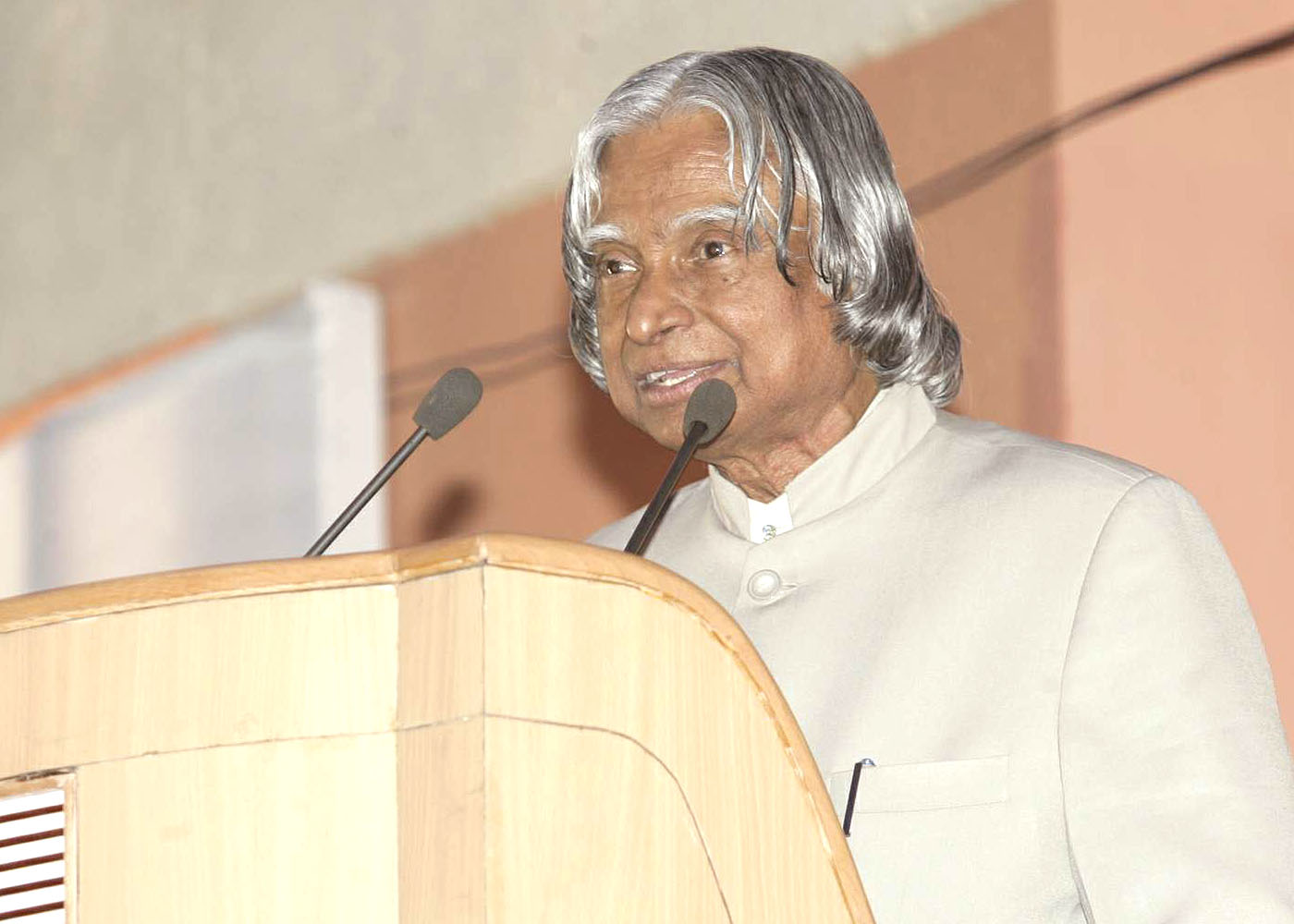

Bio-info-nano-technologies
The information technology and communication technology have already converged leading to Information and Communication Technology (ICT). Information Technology combined with bio-technology has led to bio-informatics. Now, Nano-technology is knocking at our doors. It is the field of the present and future that will replace microelectronics and many fields with tremendous application potential in the areas of medicine, electronics and material science. When Nano technology and ICT meet, integrated silicon electronics, photonics are born and it can be said that material convergence will happen. With material convergence and biotechnology linked, a new science called Intelligent Bioscience will be born which would lead to a disease free, happy and more intelligent human habitat with longevity and high human capabilities. Convergence of bio-nano-info technologies can lead to the development of nano robots. Nano robots when they are injected into a patient, my expert friends say, it will diagnose and deliver the treatment exclusively in the affected area and then the nano-robot gets digested as it is a DNA based product. I saw this in a developed state at Daedeok Innopolis, South Korea. In the present world of modern biology we see that the scientific disciplines becoming borderless. For example, at the sub-atomic level we deal with nuclear physics, at the atomic level we deal with chemistry, whereas at the molecular level we deal with biology and at the DNA level we deal with bio-technology. This message has to be taken by the scientific community so that the power of science for solving societal problems can be used collectively by specialists in multiple disciplines.
Now, I would like to discuss the work done by International Center at Chennai for Biomedical Sciences and Technology in the area of Gene Chip.
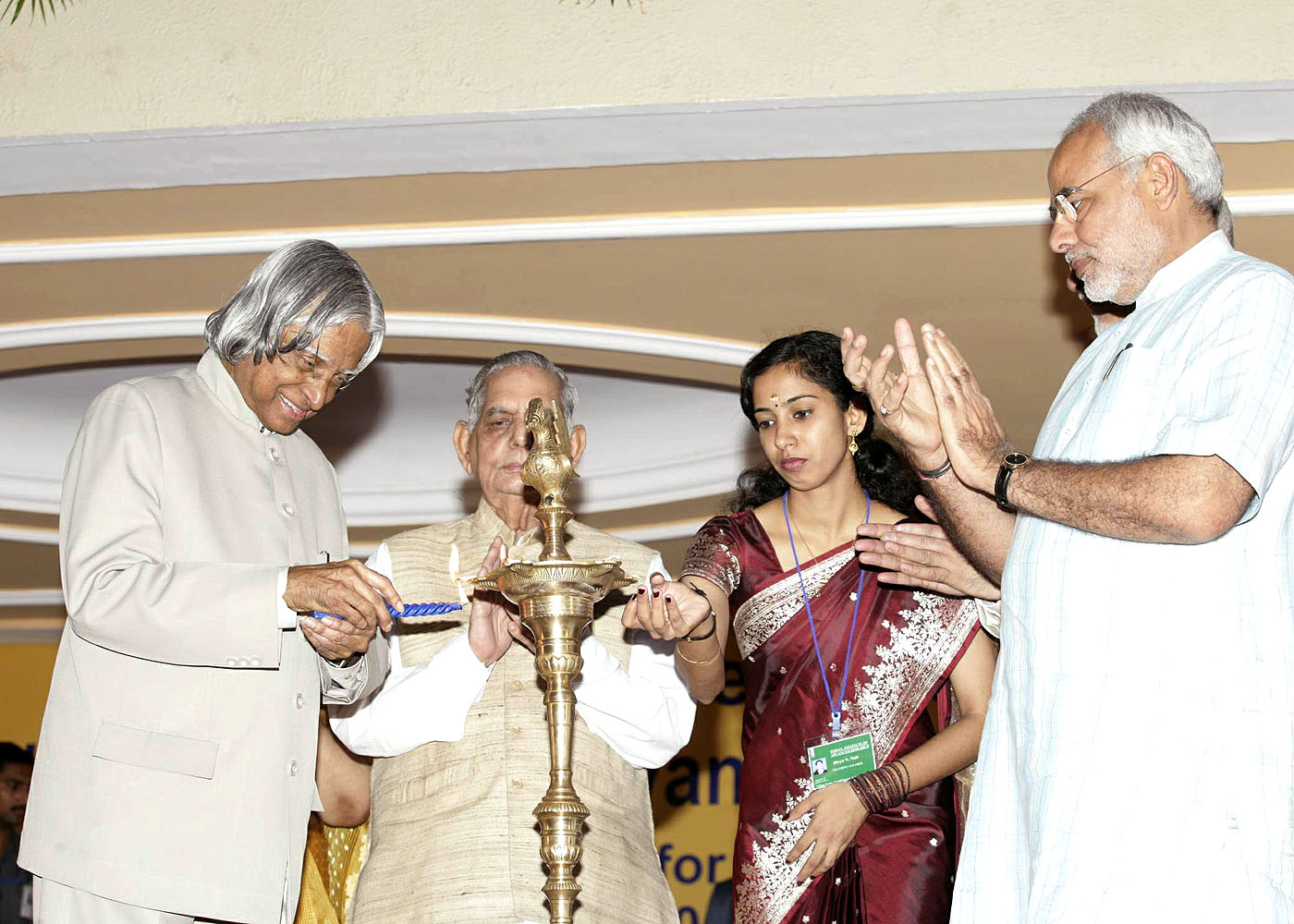
Gene Chip: In this institute I interacted with Dr. Emmanuel, who has developed a Gene Chip which can be used for finding the existence of genetic diseases including coronary artery diseases or neuro defect in the baby during a certain stage of pregnancy itself. The chip could also be modified to suggest to the patient?s system to develop those chemicals, which in turn will help the patient recover from the present situation. The scientists assembled here may like to debate whether gene chip can be used for identifying the susceptibility of the baby to the allergic diseases in the advanced stage of pregnancy. Can medical bio-informatics help in finding a treatment regime for the mother, which may give immunity to the child from multiple diseases? Now I would like to bring out certain important research work done by our scientists in nano-technology area which has already resulted into products.
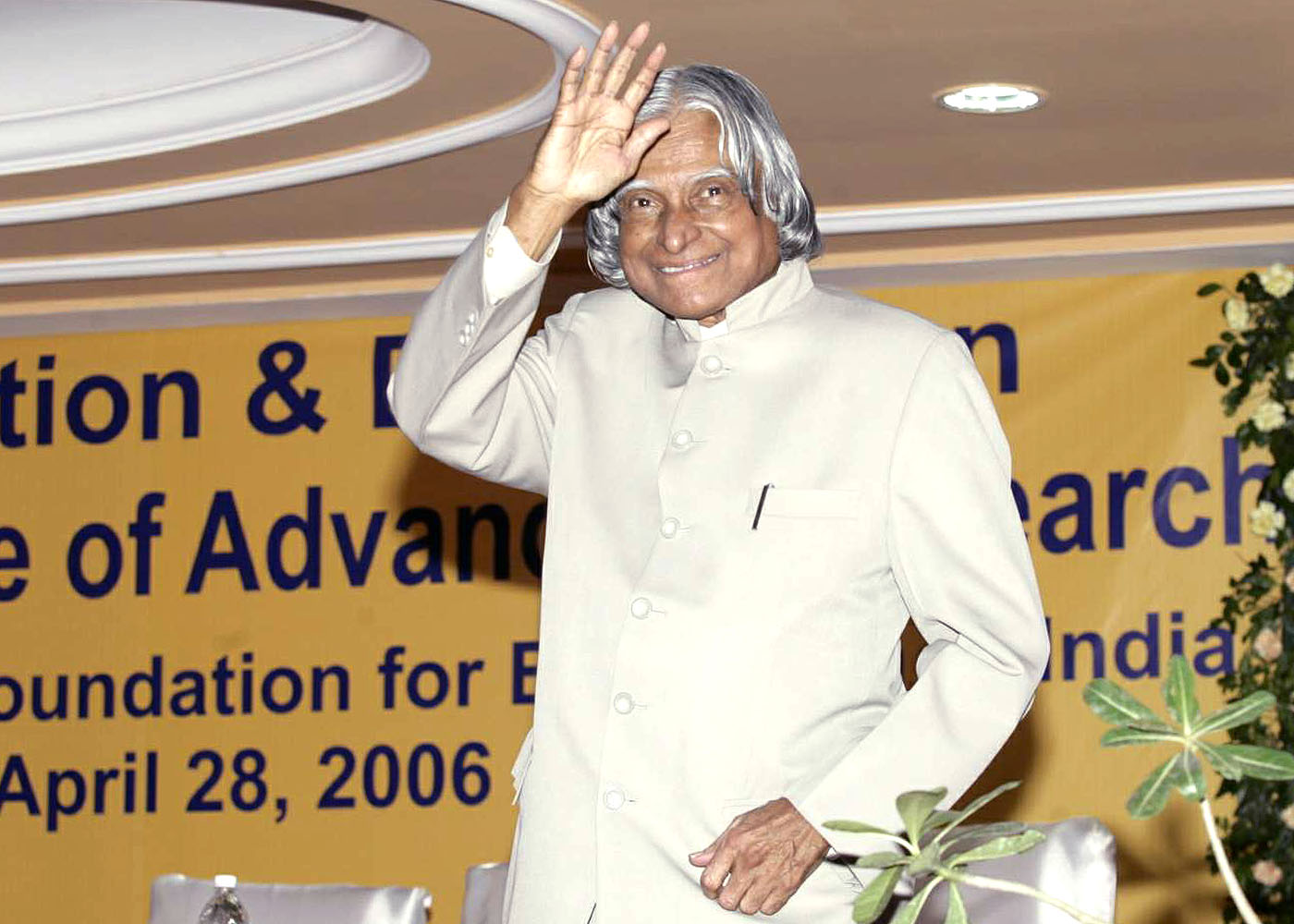

Products progress in Nano Science and Technology in India - some inspiring examples
a. Water: Nano tube filter - water purification
The scientists from Banaras Hindu University have devised a simple method to produce carbon nanotube filters that efficiently remove micro-to nano-scale contaminants from water and heavy hydrocarbons from petroleum. Made entirely of carbon nanotubes, the filters are easily manufactured using a novel method for controlling the cylindrical geometry of the structure. The work was supported in part by the Ministry of Human Resource Development and Department of Science and Technology.
The filters are hollow carbon cylinders several centimeters long and one or two centimeters wide with walls just one-third to one-half a millimeter thick. They are produced by spraying benzene into a tube-shaped quartz mould and heating the mould to 900?C. The nanotube composition makes the filters strong, reusable, and heat resistant, and they can be cleaned easily for reuse.
The carbon nanotube filters offer a level of precision suitable for different applications. They can remove 25-nanometer-sized polio viruses from water, as well as larger pathogens, such as E. coli and Staphylococcus aurous bacteria. The researchers believe this could make the filters adaptable to micro fluidics applications that separate chemicals in drug discovery. This is a classic application of the latest in Nano science, to the age old problem of water purification.
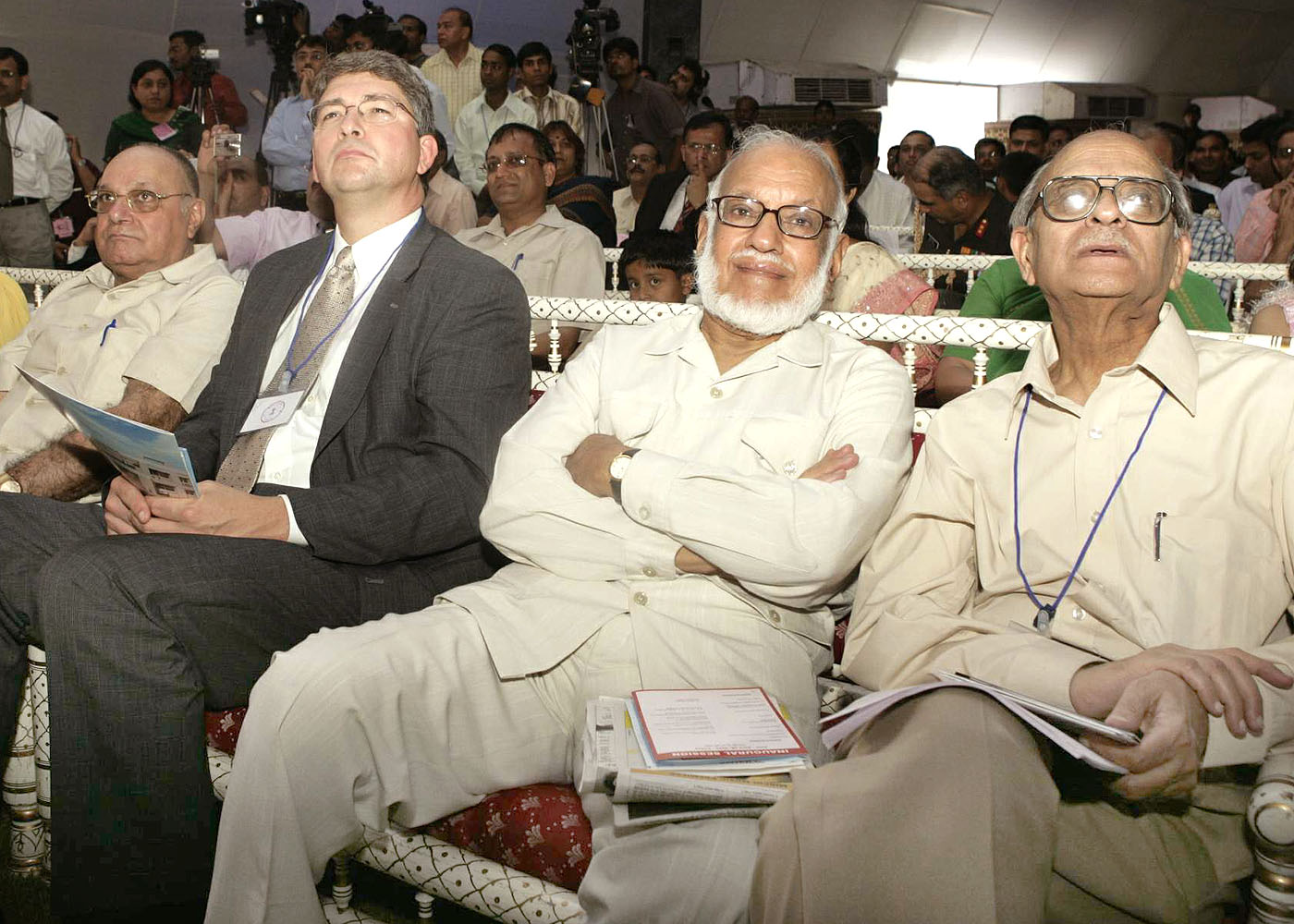
b. Healthcare: Typhoid Detection Kit
Typhoid Detection Kit has been developed by DRDE, Gwalior using the nano sensor developed by Prof. A.K. Sood, and his team from IISc, Bangalore. Typhoid fever caused by Salmonella typhi is a major health problem and an important challenge to health authorities of third world countries due to unsatisfactory water supply, poor sanitary conditions, malnutrition, emergence of antibiotic resistant strains etc. According to an estimate the worldwide incidence to typhoid fever is 16 million cases annually and death rate is 6 lakhs individual per year worldwide. In India, the morbidity due to typhoid varies from 102 to 2219/100,000 population in different parts of the countries. In some areas typhoid fever is responsible for 2-5% of all deaths.
In India for routine diagnosis for typhoid disease Widal test is performed with single serum sample which does not provide the correct diagnosis of infection, apart from taking long time for the results to be available. Therefore a Latex agglutination based test has been developed at DRDE, Gwalior using recombinant DNA technology and immunological technique for rapid diagnosis of typhoid infection. The test detects S. typhi antigen directly in patient?s serum within 1-3 minutes which is very important for initiating early treatment and saving human life.
A collaborative work has been carried out with Prof. A.K. Sood of Indian Institute of Science, Bangalore, the sensitivity of the test has been increased 30 times by applying a small electric charge (1.5 V). With this improvement, extreme low concentrations of the antigen in clinical sample can be detected. Moreover, very small quantity of clinical sample as low as 2-3 micro liter is required to perform the above test as compared to 10-15 micro liter samples required for latex agglutination test.
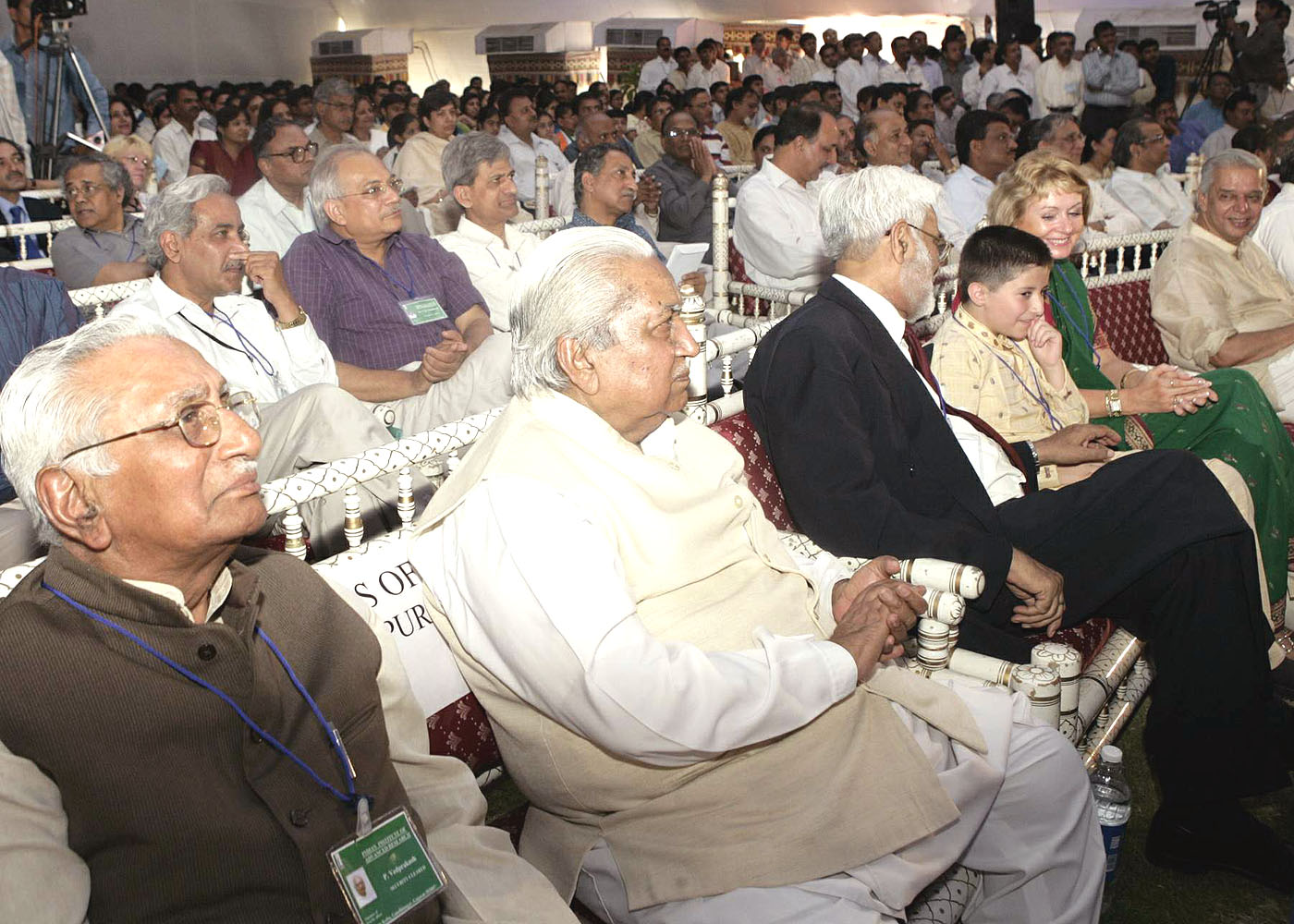
c. Drug delivery system
A research group headed by Professor A. N. Maitra of the University of Delhi?s Chemistry Department has developed 11 patentable technologies for improved drug delivery systems using nanoparticles. Four of these processes have been granted U.S. patents. One of the important achievements at the initial stage of drug delivery research was development of a reverse micelles based process for the synthesis of hydrogel and ?smart? hydrogel nanoparticles for encapsulating water-soluble drugs. This method enabled one to synthesize hydrogel nanoparticles of size less than 100nm diameter. This technology has been sold to Dabur Research Foundation in 1999.
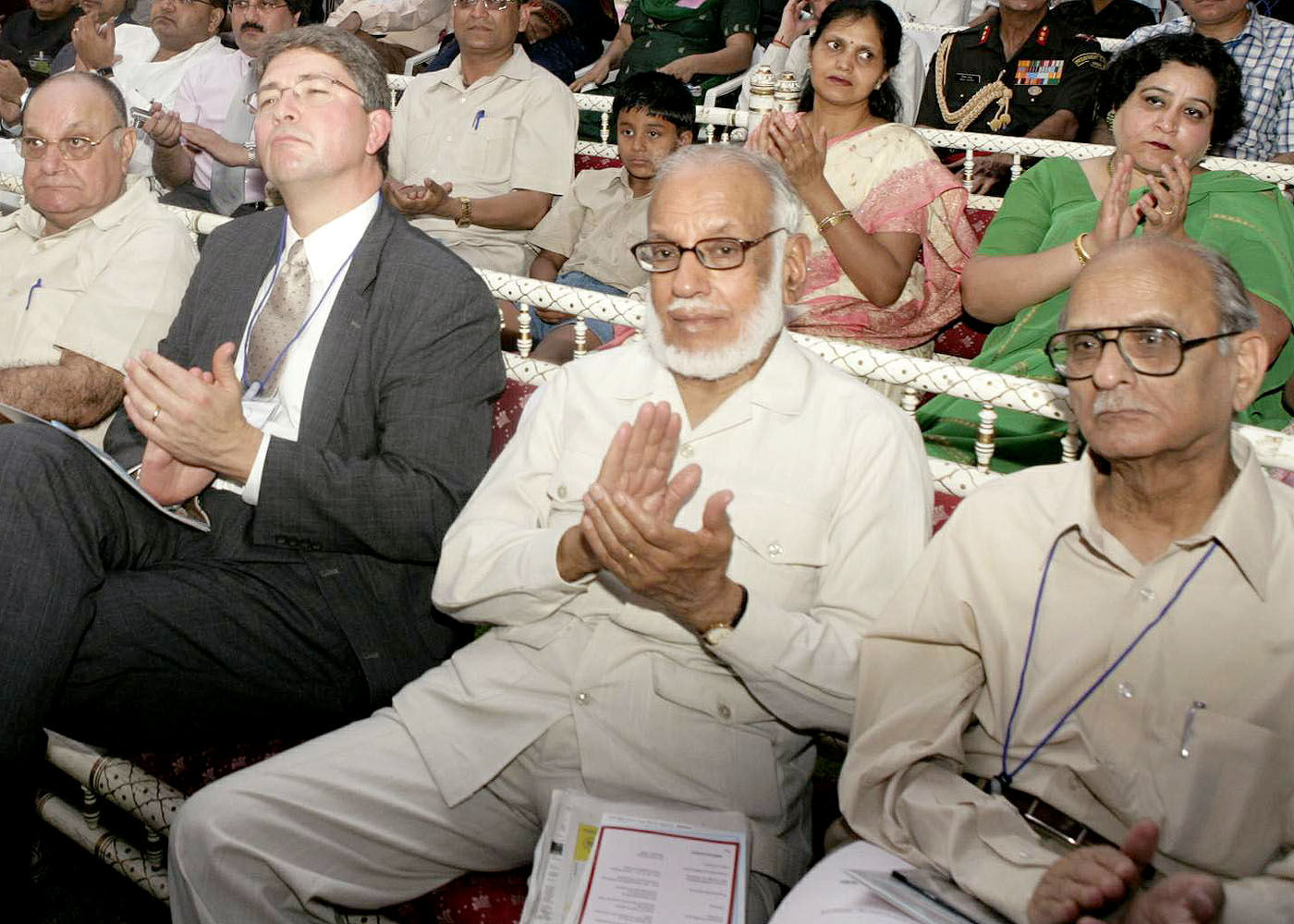
d. Power: Gas flow induced generation of voltage from solids
Prof AK Sood, professor of Physics at IISc and his student Shankar Ghosh has studied, experimented and found that the liquid flow in carbon nano tubes can generate electric current. One of the most exciting applications to emerge from the discovery is the possibility of a heart pacemaker - like device with nanotubes, which will sit in the human body and generate power from blood. Instead of batteries, the device will generate power by itself to regulate defective heart rhythm. The IISc has transferred the exclusive rights of the technology to an American start-up Trident Metrologies. They will develop the prototypes and commercialize the nano gas flow sensors.
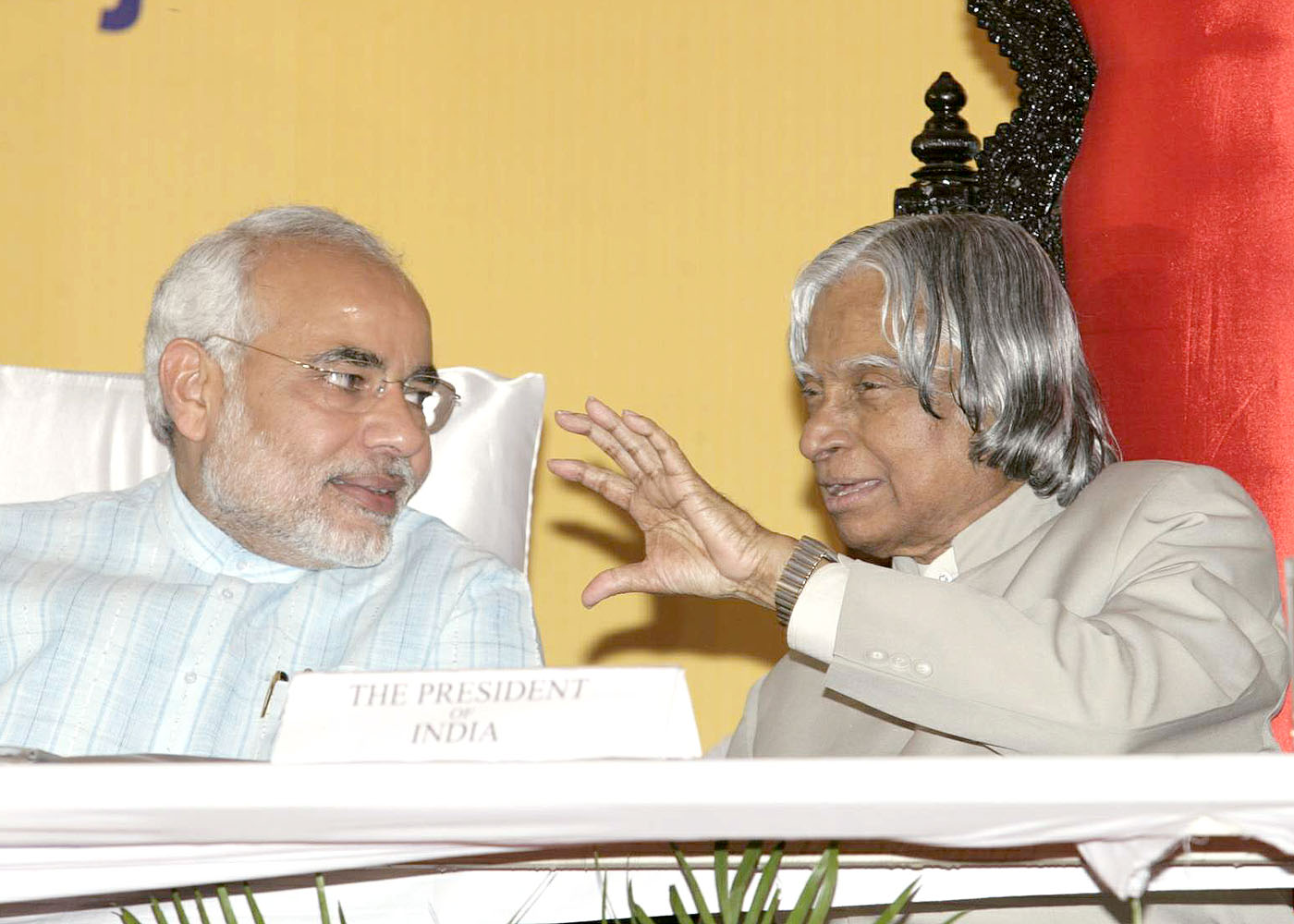

Stem cell research
During my visit to various laboratories in India, I am inspired to see the beginning of stem cell research for different purposes including brain research. I would like to share with you an important stem cell research application in the field of cardiology. When I met Dr.P. Venugopal, Director, All India Institute of Medical Sciences (AIIMS) a famous cardiovascular and thoracic surgeon, he told me about his experiences. He said in one of the cardiac diseases, where conventional medical and surgical treatment were ineffective because of the affliction of the heart muscle, use of autologous bone marrow stem cells implantation into the diseased heart muscles had been applied in order to improve the function of heart muscle. This kind of application of this procedure is the latest and very few cases have been done in the world, the first time in India. This is expected to open new frontiers in the treatment of patients for regeneration of heart muscles, thereby giving new hope for the patients suffering from end stage heart disease.

Malaria
I was studying the incidence of Malaria in the country during the period 1998-2003. Though, the number of cases reported has reduced, fatal cases have increased from 644 to 943. I understand that the conventional medicine used for treatment of Malaria namely Chloroquin has become resistant to Falciparum which causes cerebral Malaria. Our scientific teams have developed and produced a drug named Arteether from Artemisinin which has been found to be an effective cure for cerebral Malaria. Also, Ranbaxy has acquired a malarial drug molecule and they are progressing towards clinical trials. The fully developed drug will be available in the market soon. This will be another important milestone in the treatment of Malaria. However, we have to speed up the process of developing the vaccine for malaria which is being done by International Centre for Genetic Engineering and Bio-technology in collaboration with Bharat Bio-tech. This research is essential for bringing the disease under total control. Now, I would like to talk about another important area which is HIV AIDS.

HIV AIDS
It is reported that in India number of HIV infected people is on the increase. It is critical that the transmission of HIV infection is prevented. An effective vaccine that can prevent this disease will be a cost effective tool for control of infectious diseases. There are three Sub Types of Viruses classified as A, B and C. I understand that Indian population is largely affected by sub-type C virus.
There are two candidate vaccines presently considered for use against sub type C virus in our country. In view of the urgency of finding a cost effective vaccine the expert group reviewed the vaccine candidate for HIV sub type C in the pipeline. Adeno-Associated Virus (AAV) based vaccine with HIV-1 sub type C (African strain) developed by Targetted Genetics Corp, USA was found to be in advanced stage of test in different parts of the world. This HIV vaccine (tgAAC09) is now undergoing Phase-I trial for safety and immunogenicity assessment in healthy HIV uninfected volunteers at National AIDS Research Institute, Pune.
The Indian vaccine has been developed by scientists from National Institute of Cholera and Enteric Diseases in collaboration with National AIDS Research Institute, Pune and Therion Biologics, USA. This is a recombinant vaccine containing six genes from HIV 1-C strain. This vaccine was developed from the virus isolated from National AIDS Research Institute, Pune. This will go into Phase-I trial in healthy uninfected adults at Tuberculosis Research Center, Chennai during this year. In addition to these two vaccines a DNA based vaccine and SFV vaccine are also under development.
Time has, now arrived to take up this development in a mission mode so that an effective vaccine will be available for our country within a short time.
When I am presenting various success stories from research laboratories and Pharma industries, I visualize that the IIAR will soon join the band and become a novel center of innovation for promoting a disease free world.
Now, I would like to discuss an area of plant research which is vital for realizing energy independence by 2030.

Research, Development and Production of Jatropha
India?s waste land is spread in different regions with different climatic conditions and also falls in the category of rain fed or irrigated land. To cater to this variety of soil and climatic conditions research is required to determine the particular plant variety which will give the maximum yield of Jatropha seeds and the maximum yield of oil from that particular seed. Also research is required to find varieties of species and hybrids which will start yielding Jatropha seeds early within a year and higher yield per plant. Based on this research seed farm or stem farm are required to be created for each state and the selected proven seedlings or seed must be provided to the farmers including the know-how on the number of plants and pattern to be used per hectare, preparation of soil prior to plantation and the right time of planting the seeds. Later, farmers should also be advised to use the right type of fertilizers and organic pesticides including trimming methodology and the periodicity. Also farmer should be given advice on friendly intercropping plants which can co-exist with Jatropha and provide enhanced revenue to the farmers. Finally it has to result in establishing number of high yield Jatropha seed banks in the country and Jatropha becomes the main input for producing bio-diesel. Now, I would like to discuss with you a new research finding which may be of interest to the scientific community assembled here.

Emissions from trees and climate change
Frank Keppler at the Max Plank Institute for Nuclear Physics, Heidelberg, Germany, and his colleagues claim in an article published in Jan 2006 issue of "Nature", that plants emit upto 30% of the world?s methane every year. This has totally changed the discussions on the causes for climatic change. After discovering that fallen leaves, or plant litter, produced methane, Keppler investigated whether living plants also produce this highly reduced gas in air ? an oxygen rich environment. He calculated that plants give off between 60 and 240 million tonnes of methane per year. 'It is a new pathway of methane formation,' said Keppler, 'it will change our thinking about plants and their role in climate change.'
The news has shocked the atmospheric science community. 'I am still amazed that people haven't seen it before; you wouldn't expect methane to come from plants and the air. You won?t find any chemical reaction that people know about that would do that.' said David Lowe, from the National Institute of Water and Atmospheric Research, Wellington, New Zealand.
Ed Dlugokencky from the US National Oceanic and Atmospheric Administration expects most scientists to react with disbelief. 'Since plants produce hydrocarbons such as isoprene and terpenes in large amounts and single carbon compounds such as methyl halides and methanol, I should not be too surprised by this result,' he told Chemistry World. Both Lowe and Dlugokencky commented that Keppler's experiments were so thorough there can be little room for doubt about the validity of Keppler?s claims.
Under Kyoto protocol rules countries are allowed to use forest sinks to offset emissions. If a country emits lots of carbon dioxide, but plants new forests, it can subtract the carbon dioxide that the trees remove. In light of the news that plants produce large quantities of another greenhouse gas, political leaders, policy makers and scientists will now have to work out new strategies for calculating net carbon emissions from trees. The IIAR is well placed to debate this issue without any bias, explore further and guide the nation appropriately.
Now, I would like to discuss the innovative approach made by Singapore in developing quality manpower for research.

Nano Science Focused research in East Asia
During my recent visit to Singapore, I visited the facility built up in Biopolis, Singapore. There I saw an innovative programme of development of quality manpower in life sciences. Biopolis has a scheme of searching talent globally and providing them all the facilities to acquire qualification of their choice from any University located in the world. They provide the funds for the entire programme of study and they require the students to come back and work in Singapore in the field of life sciences for a minimum of six years. This idea has emanated because they want quality manpower across the world to enhance their R&D potential leading to commercialization initiatives. I am sure; there is an important message for all of us for nurturing excellence in our youth for all scientific research work particularly in biological science and bio-technology.
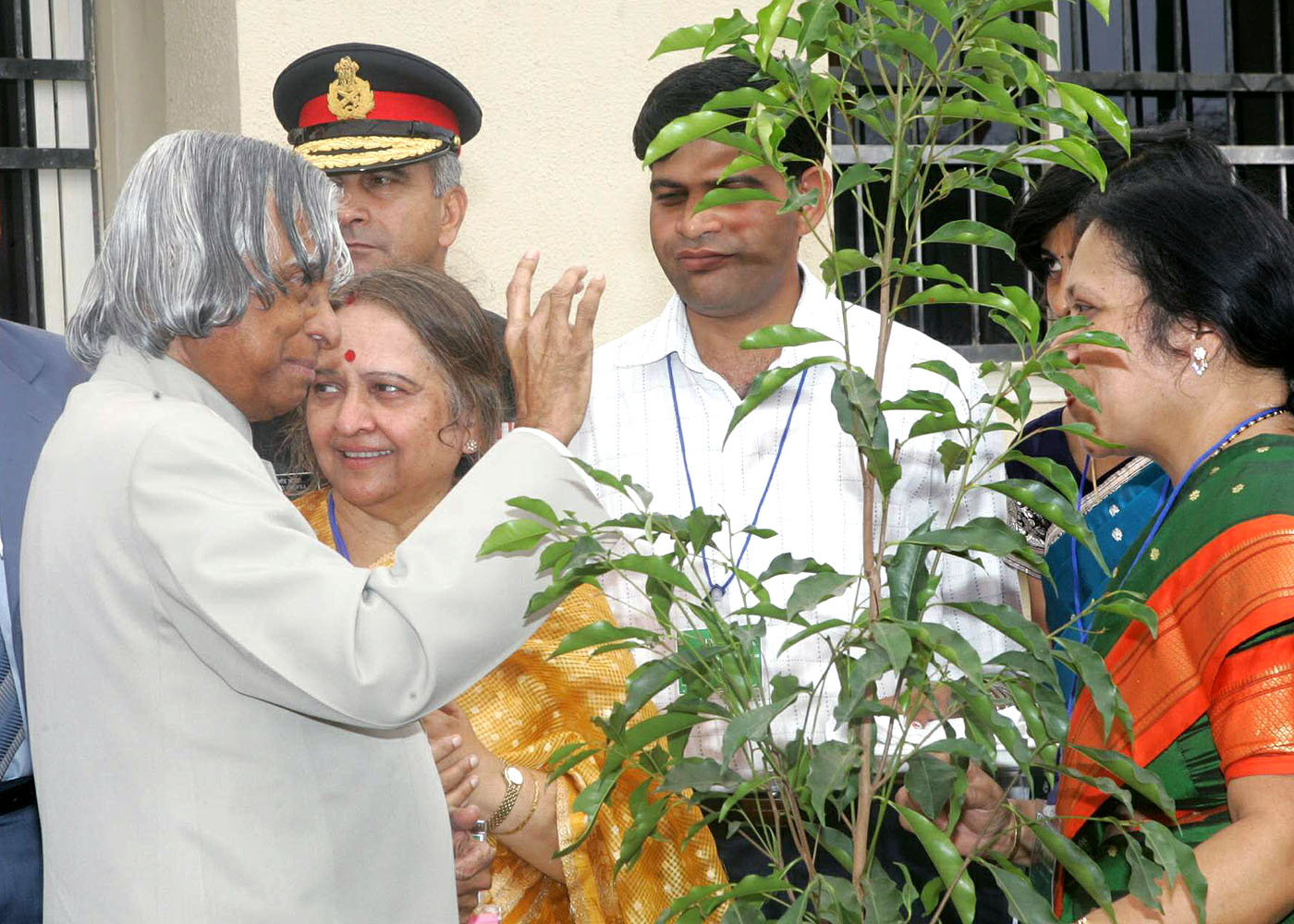

Conclusion
Friends, when I see you all from different parts of the country, I would like to say that you are blessed with a rare scientific opportunity which can be used for transforming the research results into products in a very short time. That will indeed save many lives. For enabling this opportunity to be captured, all educational institutions and research laboratories have to work together on selected mission by breaking the geographical barriers and barriers between science and engineering which will enrich biological and bio-technological research resulting in the generation of solutions to the various problems faced by mankind.
Keeping the importance of frontiers of new biology in mind, I have the following suggestions for the participants of this conference.
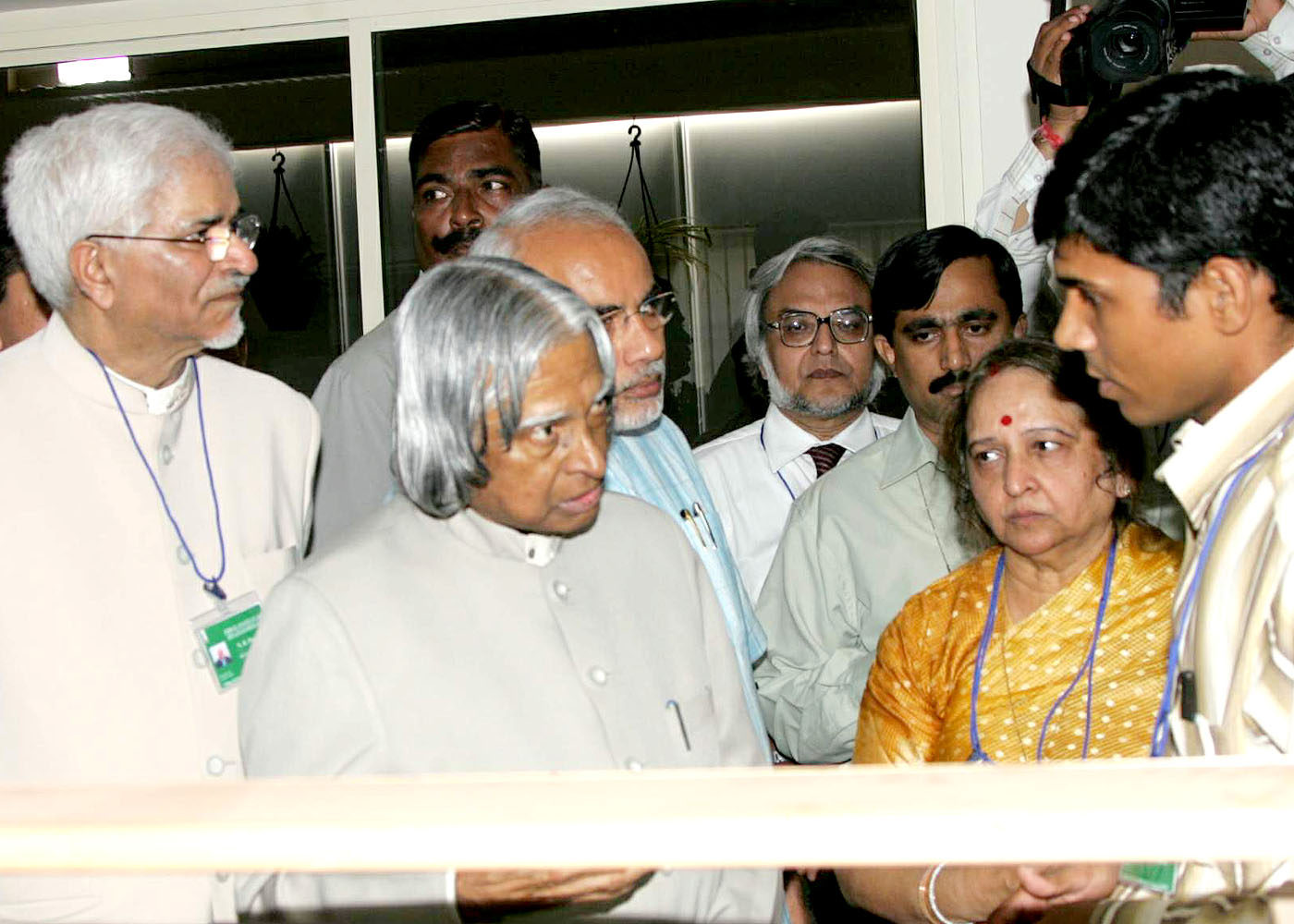
(a) This Symposium can give a roadmap for an inter disciplinary research programme on convergence of bio-info-nano-technologies which is very important for finding solutions in life science problems.
(b) Recommend one area each in the plant and agricultural sciences, health and disease, bio-molecular medicines and environmental bio-technology in which the Indian Institute of Advanced Research can take up leadership and pursue research in collaboration with other national and international institutions for solving problems of immediate importance to the society.
(c) During my discussions with Prof. Varadan of Penn State University (USA), he mentioned about a novel treatment technique for Parkinson?s disease using nano-technology. The symposium can constitute a scientific team with members drawn from National Brain Research Center, NIMHANS and other institutions to work in collaboration with Penn State University to find a lasting cure for Parkinson?s disease.
(d) India is producing 12% of the world cotton production, however extra long staple cotton is not being produced by Indian farmers in large quantities. Plant genome scientists assembled here may like to formulate a programme to develop Extra Long Staple Cotton (ELSC) variety exceeding 36 mm length so that Indian farmers can double their revenue through production of such varieties.
(e) Environmental bio-technologists participating in the Conference may carry out further research on Keppler?s finding about the plants generating large volume of methane. This research can also be extended to evolve an economic method through which we can collect the methane for its productive utilization.
(f) Participants of the Seminar may evolve a method which can integrate the research efforts in the development of Vaccines of malaria, typhoid and diarrhoeal disorder which can lead to the development of a combination vaccine for administration to the children in time bound manner, so that we can aspire a world free from all the three diseases within the next decade.
With these words, I am happy to inaugurate the Indian Institute of Advanced Research and also the Symposium on "New Frontiers in Modern Biology". I am also happy to launch the IIAR website. This is a very important media for interactive scientific communication. I would only recommend that the website must get updated online so that the scientists can get and share the latest information for their work. My best wishes to all the participants of this Symposium for success in their mission of discovering new avenues of using bio-science and bio-technology for societal well being and prosperity.
May God bless you.
<<Back
|
|